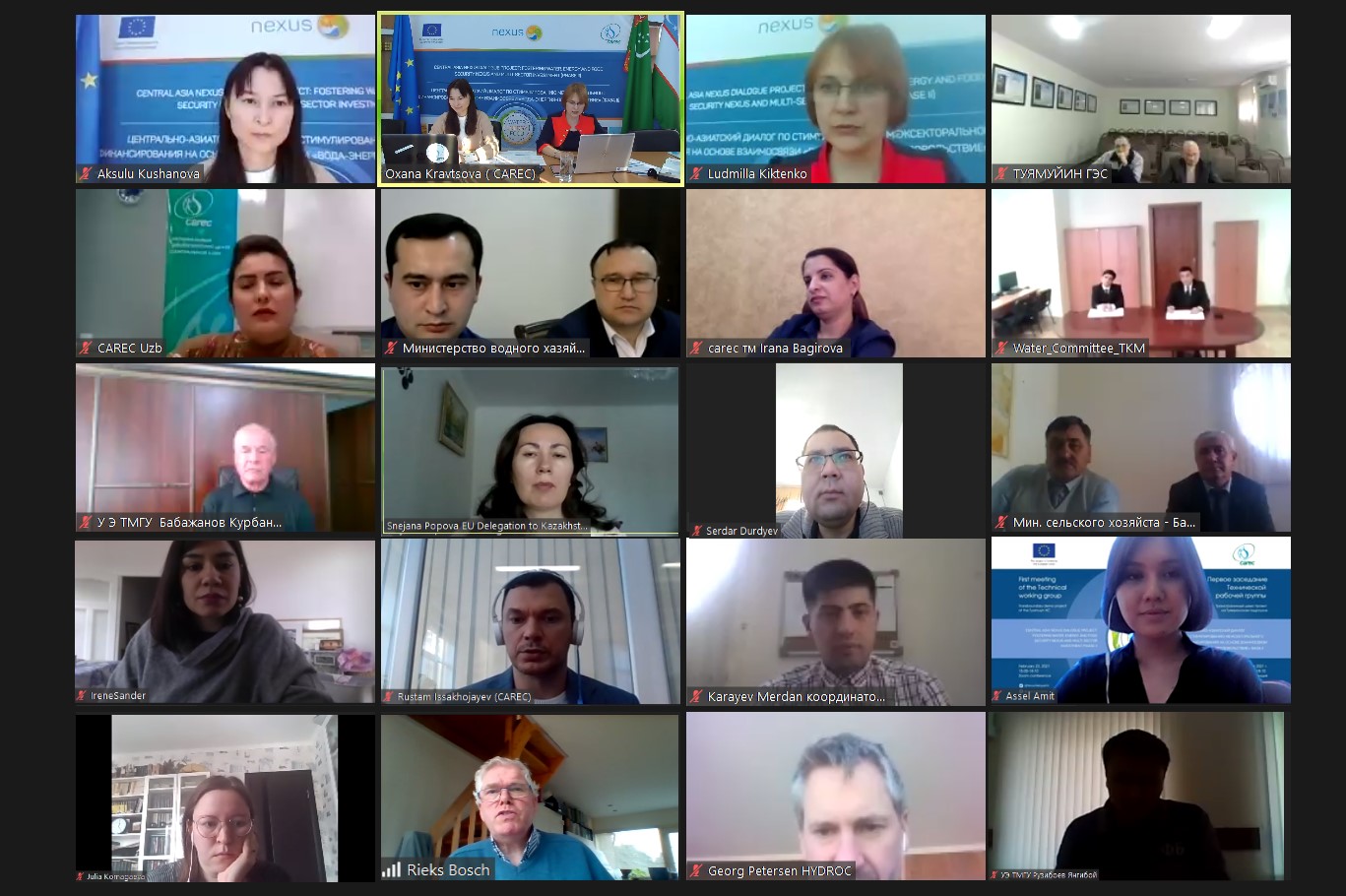
Photo: Tuyamuyun Hydroelectric Complex, Ilkhom Zhuraev
CENTRAL ASIA – The European Union (EU) helps to address the issue of siltation at the Tuyamuyun Hydroelectric Complex with a view to improve the livelihood of people living in the Amu Darya River basin. The working group of experts met today online to discuss implementation of the demo project to introduce the water-energy-food (WEF) Nexus approach at the transboundary facility located along the Turkmen-Uzbek border. The meeting was organized by the EU-funded project "Nexus Dialogue in Central Asia" implemented by the Regional Environmental Centre for Central Asia (CAREC).
Tuyamuyun Hydroelectric Complex (THC) represents a solid WEF Nexus case. Through seasonal regulation of the water volume in the Amu Darya River, it provides essential water and energy resources to agricultural farms for growing melons, guards and other crops (wheat, cotton), as well as to fish farms. The facility also provides drinking water and electricity to the local population and private sector in the nearby areas in the territory of Turkmenistan and Uzbekistan. However, the growing siltation complicates effective water use for power generation and agricultural needs, which is a common challenge for all water bodies in Central Asia. The demo project aims to find technical solutions and investment opportunities to address the issue of intensive siltation of the Ruslovoe Reservoir at THC.

“We believe that the attention and efforts put in the Tuyamuyn Hydroelectric Complex will pay off as this facility plays a vital role for the downstream countries along the Amy Darya River and sustains lives of many local people. The growing siltation affects the water allocation and presents a threat to water and energy security. Innovative solutions to remove and utilize the bottom sediment will decrease the opportunity cost for agricultural sector in both countries”, – stated Mr Kurbanbai Babazhanov, Head of the THC Operation Division.
At its first meeting, the working group discussed the scope of work and technical measures to remove accumulated sediment from the Ruslovoe Reservoir and agreed to assess climate vulnerability and climate risks at the site and develop suitable adaptation measures.
“This demo project will certainly strengthen and enhance the transboundary water cooperation between Turkmenistan and Uzbekistan”, – noted Mr Murze Purliyev, Chief Specialist of the Division for Production, Industry and Mechanization of the State Committee of Water Resources of Turkmenistan.
The demo project at the transboundary facility is supported by the Ministry of Water Resources of Uzbekistan and the State Committee for Water Management of Turkmenistan. It will be implemented from February 2021 to December 2022. Among the working group members are authorized officials from relevant ministries and agencies of Turkmenistan and Uzbekistan, as well as from THC.
For more information, please follow this link, Twitter at #NexusCentralAsia, or contact us directly:
Lyudmila Kiktenko, Project Manager, lkiktenko@carececo.org, Yerkezhan Amriyeva, Political, Press and Information Section, EU Delegation to Kazakhstan, email: yerkezhan.amriyeva@eeas.europa.eu
The second phase (2020-2023) of the European Union project "Central Asian Dialogue to Promote Sectoral Financing through the Water-Energy-Food Nexus" is a continuation of the first phase (2016-2019) and is being implemented by the Regional Environmental Centre for Central Asia (CAREC). The project is part of the global Nexus Dialogue Programme, which is supported by the European Union (EU) and the German Federal Ministry for Economic Cooperation and Development (BMZ) in five regions.

